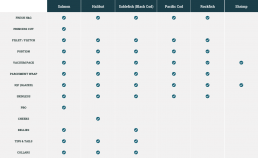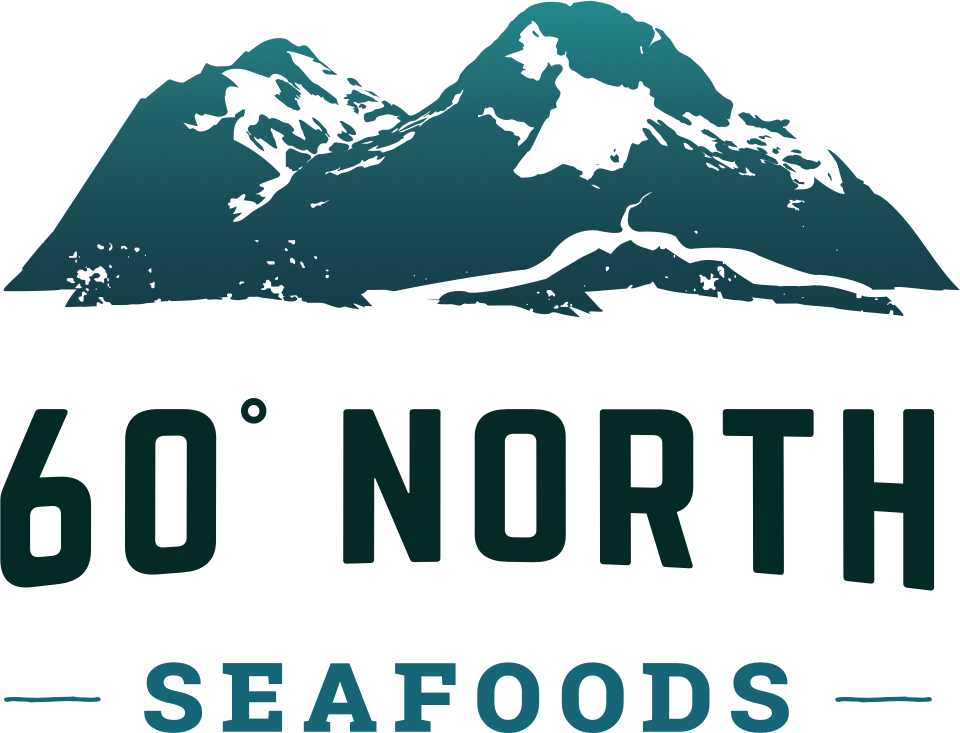Wild Alaskan Salmon
There are many salmon species that exist, but when it comes to the nutrition profile, taste and health benefits, there’s only one variety that stands out: wild Alaskan salmon.
Wild Alaskan salmon’s rich flavor, firm texture, and vibrant color comes from the untouched Alaskan waters they thrive in. High in omega-3 fatty acids, wild Alaskan salmon is known for its incredible health benefits and taste.
Salmon available fresh and frozen in the following cuts:
- H&G
- Princess
- PBI Fillet
- PBO Fillet*
- Vacuum packed Portion (6oz, 8oz, 16oz)
- Vacuum packed PBO Portion
- IQF Portion
- IQF Fillet
*Pin bone removal done by machine
Other salmon items available upon request:
- Roe skeins
- Collars
- Bellies
- Chop
- Tips and tails (trim)
Copper River Salmon
Copper River king, also known as Chinook, are of the most prized species. They are renowned for their robust size and rich flavor thanks to an abundance of omega-3 fatty acids.Kings average about 20 lbs, but some can reach up to 60 pounds. Kings are often the first salmon caught during the season, which starts around mid-May, and usually ends in late June.
Eating characteristics:
- Red flesh
- Firm, moist, succulent texture
- Rich salmon flavor
As the “Red” nickname name suggests, the flesh of sockeye is its defining characteristic: bright red that remains a desirable shade even when cooked. Averaging about 6 pounds each and boasting a deep red color, full flavor and texture, Copper River sockeye are high in omega-3 fatty acids and vitamin D. Copper River sockeye are the most abundant salmon harvested from the Copper River and the season lasts from May to August. Sent to market fresh while in season and frozen in the off season.
Eating characteristics:
- Bright red flesh, even when cooked
- Firm, moist texture
- Intense salmon flavor
Copper River coho, also known as silver salmon, have a definitive silver skin and reddish-orange flesh. Averaging about 12 pounds each, coho arrive in late August and September and feature a firm flesh and delicate flavor. The season is short and can be unpredictable due to rapidly changing weather during the early weeks of fall. Coho are often sent to market fresh or they are flash frozen for the off season.
Eating characteristics:
- Reddish-orange flesh
- Firm, moist texture
- Delicate, buttery flavor
Prince William Sound Salmon
Prince William Sound sockeye has the full flavor, firm texture and deep red salmon color that makes it a staple of wild Alaskan salmon. Rich in flavor with high levels for healthy omega-3 fatty acids. Abundant salmon runs provide PWS sockeye June through July.
Eating characteristics:
- Red flesh
- Firm, flaky texture
- Rich salmon flavor
Prince William Sound Coho average about 10 lbs each. They return from mid-August through October, with best fishing from mid-August through early September.
Eating characteristics:
- Light reddish-orange flesh
- Firm, flaky texture
- Mild flavor
One of the most abundant species, and priced lower than king and sockeye, chum is defined by its pinkish flesh and lower fat content.
Eating characteristics:
- Pinkish flesh
- Medium, flaky texture
- Mild flavor
Extremely lean and delicate, pinks are the most commonly caught wild salmon in Alaska — and also the smallest, around six to seven pounds each. Spawning males have a very pronounced hump on their back.
Eating characteristics:
- Pink flesh
- Medium, flaky texture
- Mild flavor


